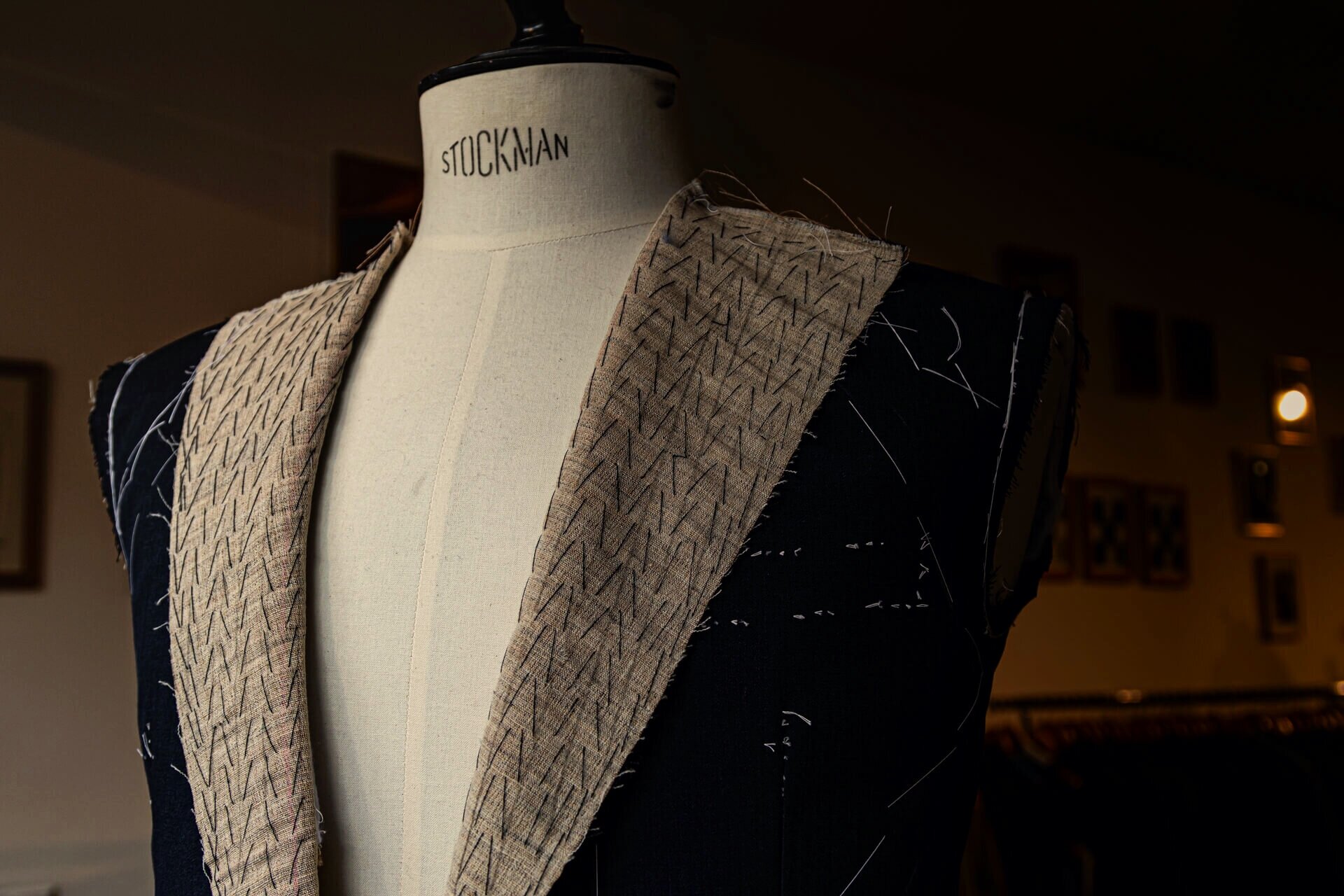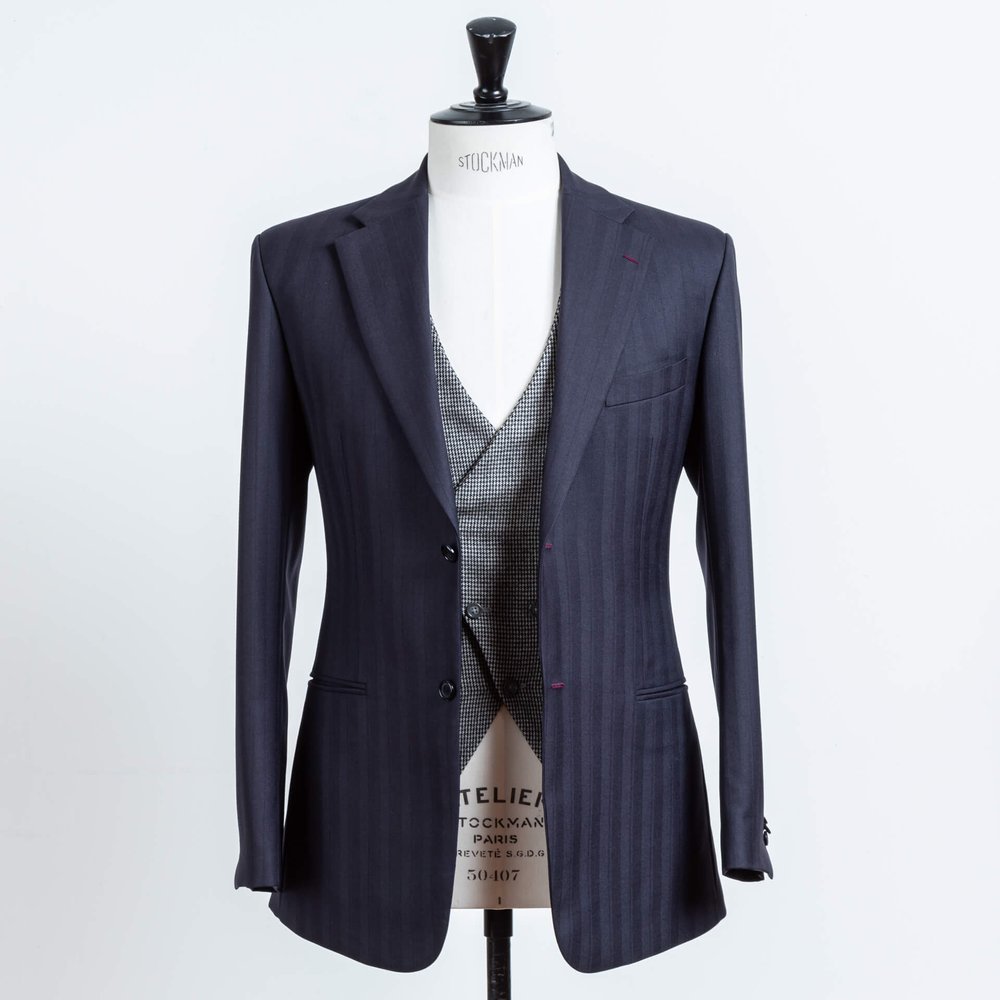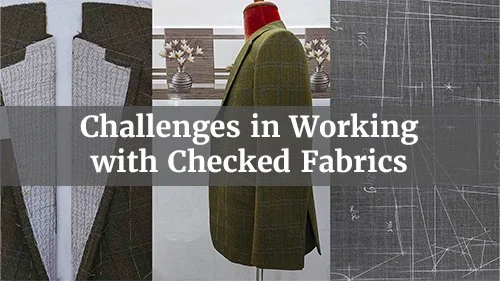How we work: De Oost Bespoke Tailoring
De Oost Bespoke Tailoring
How We Work
On this page:
1. What does an appointment for your bespoke suit looks like?
2. How is a suit made?
3. The construction of your suit: Full Canvas, Half Canvas, fused, unlined, deconstructed or different?
Welcome at De Oost Bespoke Tailoring, a world of personal attention and tailoring craft. Having a bespoke garment made is an experience you could see as your personal sartorial journey. This need time, attention and the right expertise and experience in the field of tailoring and dressing people.
We would love to be your guide and advisor on this exploration. This way you become aware of all the facets influencing your clothing. And you uncover what fits you the best regarding measurements, models, styles, fabrics, colours and details. Our traditional method of tailoring makes sure your garment fits you physically, but more importantly, fits you personally.
1. Introduction: Your Style and Preferences at the Center
During our first appointment, we take ample time to get to know you and your preferences. This personal conversation forms the foundation of the design and helps us translate your ideas into a unique garment.
Why is this important?
For new clients: We inspire and inform you, ensuring you understand what is possible and how we can help you.
For experienced clients: We refine your preferences and ensure every detail aligns perfectly with your style.
How to prepare:
· Fill out our intake form.
· Bring a garment you are either happy with or not satisfied with.
· Gather inspiration, for example, from our blogs or fabric books.
In bespoke tailoring, your preferences take the lead. This is the perfect moment to share your vision with us.
Step 2: Material – Choosing the Right Fabric
Together, we select the perfect fabric for your garment. We guide you in choosing materials that not only match your style but also suit the intended use.
Think of breathable fabrics for summer clothing, durable options for everyday wear, or exclusive materials for special occasions.
Why is this important?
For new clients: We help you navigate our wide selection and provide advice on properties such as weight, texture, and comfort.
For experienced clients: Our expertise in fabrics helps you find the perfect balance between aesthetics and functionality.
Step 3: Style – The Design That Suits You
We design a model that highlights your strengths and fulfills your style preferences. From the width of the lapels to the shoulder style and pockets—every detail is crafted according to your specifications.
Why is this important?
For new clients: We provide advice on what works best for your body shape and objectives.
For experienced clients: You have full control over every detail, with our guidance to optimize the technical possibilities.
Step 4: Measuring – Precision in Every Detail
Once the fabric and design have been decided, we take your measurements with meticulous precision. This goes beyond physical dimensions: we also analyze your posture, range of motion, and personal preferences.
Based on this, we create your personal pattern.
Why is this important?
For new clients: We ensure your clothing is comfortable and flattering, so you don’t need to worry about the technical aspects.
For experienced clients: We achieve balance in the design, where even the smallest details are perfectly adjusted.
With more than 27 measurement points and our expertise in balance and proportion, we guarantee a fit that is both stylish and comfortable.
Step 5: Fitting and Adjustments – Striving for Perfection
After 4–5 weeks, the first fitting takes place. This is the moment when you try on your garment for the first time. Together, we evaluate the fit, measurements, and details, and any necessary adjustments are made in our in-house atelier. Your measurements are carefully recorded for future orders.
Second fitting: After the first fitting, you return for a second fitting. This allows us to confirm whether the adjustments have achieved the desired results. If additional refinements are needed, the second fitting provides the opportunity to further tailor the garment to your wishes.
Why is this important?
For new clients: You experience your garment and have the opportunity to provide feedback.
For experienced clients: Our attention to detail and flexibility ensure your expectations are exceeded.
Need more time to wear the garment before finalizing? No problem—you can return later for further adjustments. Our goal is a beautifully finished garment that you wear with pride and confidence.
Why Choose De Oost?
At De Oost Bespoke Tailoring, we combine craftsmanship, personal attention, and sustainable materials to create fully tailored clothing that enhances your style.
Our promises:
• Personal guidance at every step.
• High-quality fabrics and materials from renowned suppliers.
• Garments fully handmade by master tailors.
• Unique designs tailored to your body and personality.
• An in-house atelier with the highest quality standards.
How Is A Bespoke Suit Made?
“Behind a ‘perfectly’ fitting bespoke suit lies a complex process. From measuring and pattern cutting to hand-crafted finishing touches: click through and discover how craftsmanship and attention to detail come together in every garment.”
The Construction
Of Your Suit
Full Canvas, Half Canvas
or Unlined?
“What makes a Full Canvas suit so special? And what are the benefits of Half Canvas, unlined, or fused construction?
Click and discover how each method uniquely impacts comfort, style, and durability.”
Our Additional Service: Alterations and Adjustments
Many of our clients combine an appointment for a bespoke suit with having their existing clothing altered or adjusted.
What we do: Whether it’s taking in a jacket, lengthening trouser legs, or renewing linings, our master tailors ensure that your favorite garments fit perfectly again.
Why this matters: We offer you the opportunity to make optimal use of our expertise during a single visit.
Suits Classic Formal
Suits Modern & Contemporary
Wedding Suits
Shirts
Black Tie
Trousers
Coats
Waistcoats
Ladies’ Suits
Ladies’ Shirts

























